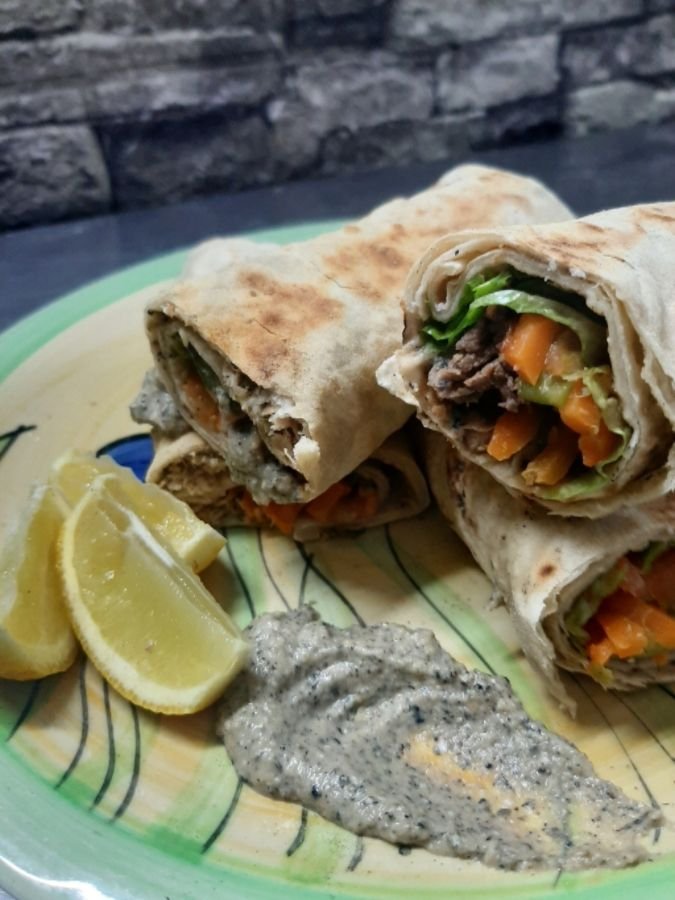
Mi forma de hacer Shawarmas
Hola querida comunidad de @hivefood, el día de hoy les traigo un post para chuparse los dedos (tanto porque te los llenas de comida como por lo delicioso del mismo), acompáñame hoy.
Yo tengo un serio problema con los garbanzos, ¡los amo!
Así que cada vez que cocino garbanzos hago suficientes para poder hacer las mil cosas que amo cocinar con ellos, desde la sopita, hasta la ensalada y por supuesto, el humus, ¿qué sería de mi vida sin humus?
Podría comer galletas de soda, o de agua como las llaman en Uruguay, con humus de desayuno todos mis días, para mí es la gloria, así que después de meses sin comer garbanzos, compré un kilo de estos, los prepare solitos con agua hasta que estaban suaves y allí los dividí en porciones, luego les traigo un recuento de todos los platillos que sacó de un kilo de garbanzos, pero hoy les traigo unos shawarmas caseros que para mis hijos son la gloria, y yo, ni hablar, los amo.
¡Y cómo no voy a amar esta receta, si lleva una buena cantidad de vegetales, suficiente proteína, y humus!
Además, que mis hijos se los comen sin rechistar, no se quejan de los vegetales, no se quejan de la ensaladilla que les colocamos, no se quejan de nada, comen felices.
Sé que esta receta no es la tradicional del shawarma, pero esta es nuestra forma de hacerlos, bien nutritivos, en casa, siempre que se pueda ocultar los vegetales, se hará, así aporta mayor nutrición y me ahorro la guerra del, mamá no me gusta esto, no me gusta aquello, mamá sácale esto.
Además, que todas las recetas que hacemos son adaptaciones a los ingredientes que tenemos a mano, por lo general ingredientes de estación o de la época en la que estamos.
Esta es otra de esas recetas laboriosas, que nos lleva bastante tiempo realizar, pero que para nosotros tiene un gran valor, tanto por el hecho de que todos trabajamos en familia para realizarla, como por el hecho de que disfrutamos mucho de la preparación de la misma.
Por cierto que debo mencionar que estos shawarmas fueron muy especiales, pues la lechuga que utilizamos en estos es totalmente orgánica, venía de nuestro pequeño huerto, la recolectamos exclusivamente para esta receta, lo cual, obviamente, tenía más valor sentimental para nosotros. Las mismas fueron plantadas desde semillas por mi marido y llevábamos 74 días cuidando de ellas.
Acompáñenme en este paso a paso para que puedas hacerte tus propios shawarmas caseros.
Ingredientes:
Para la masa:
500 ml de agua tibia
10 gr de levadura
30 gr cucharada de azúcar
1 kilo Harina de trigo
80 mil Aceite
½ cucharadita de Sal
Para los vegetales:
2 Zapallitos
1 zanahoria grande.
2 cebollas medianas
1 cebollino
½ puerro
2 dientes de ajo
Ensaladilla:
1 lechuga
2 tomates
Limón al gusto
Sal.
Para el humus:
250 gramos de garbanzos cocidos
50 ml de aceite
2 dientes de ajo
El jugo de un limón
Ajonjolí (que utilizamos para reemplazar el Tajín, pues el mismo se nos acabó)
Proteínas:
½ pechuga de pollo cocida y es mechada (sobró de otra preparación)
1 kilo de bondiola de cerdo.
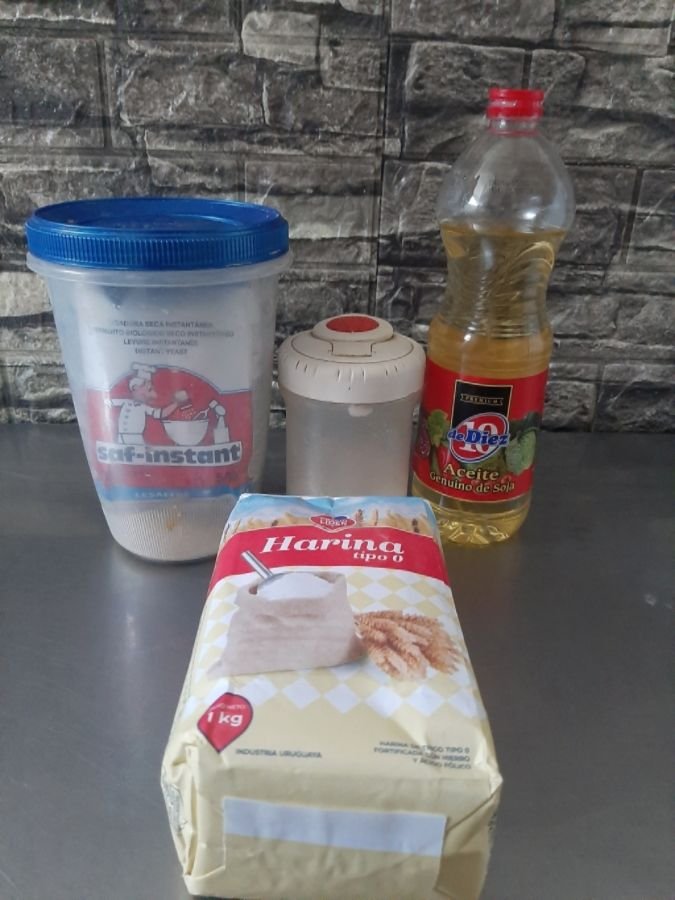 | 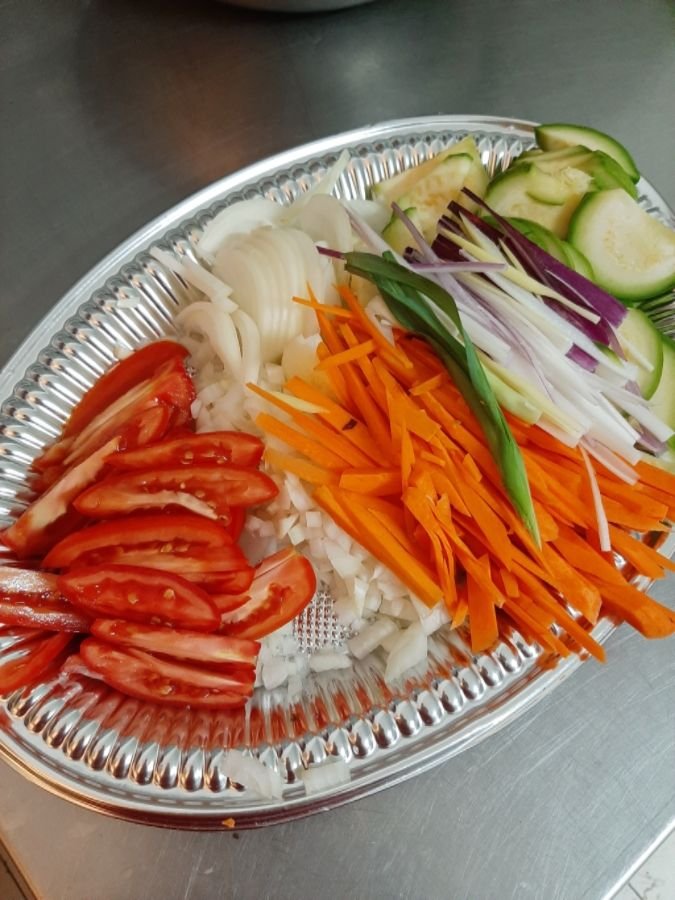 |  |
|---|---|---|
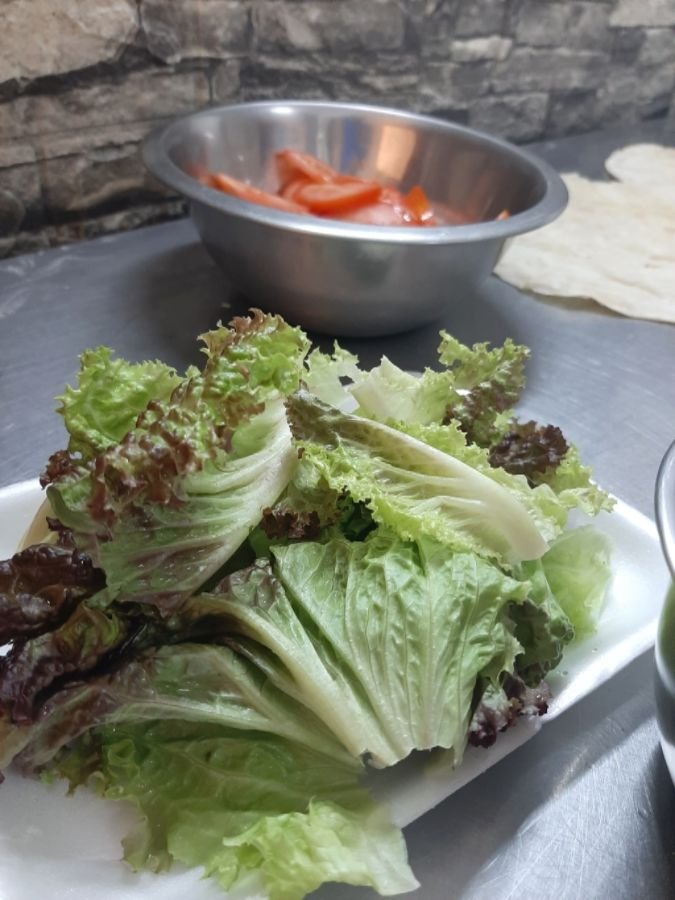 | 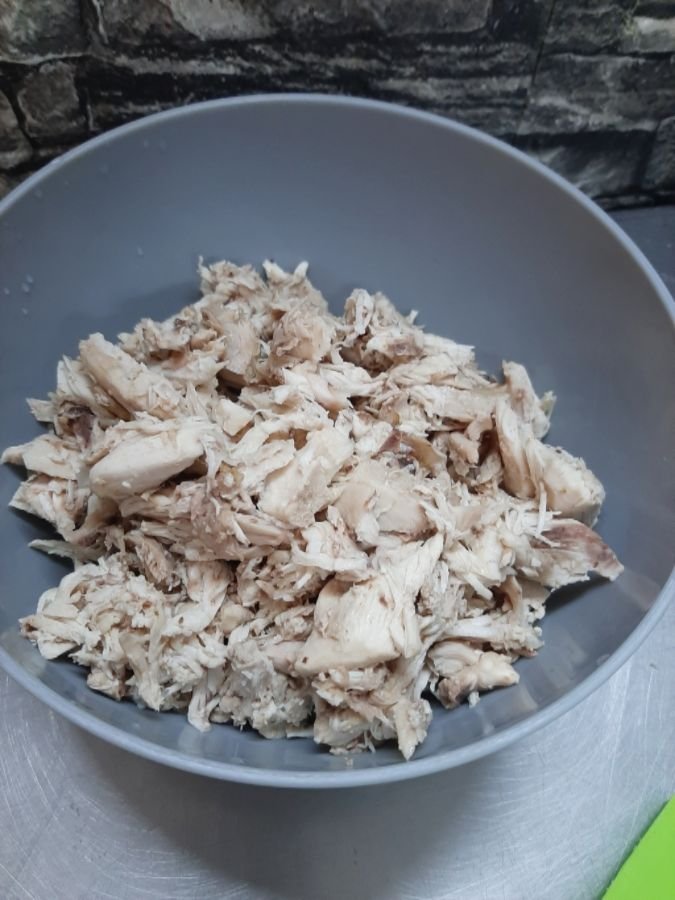 | 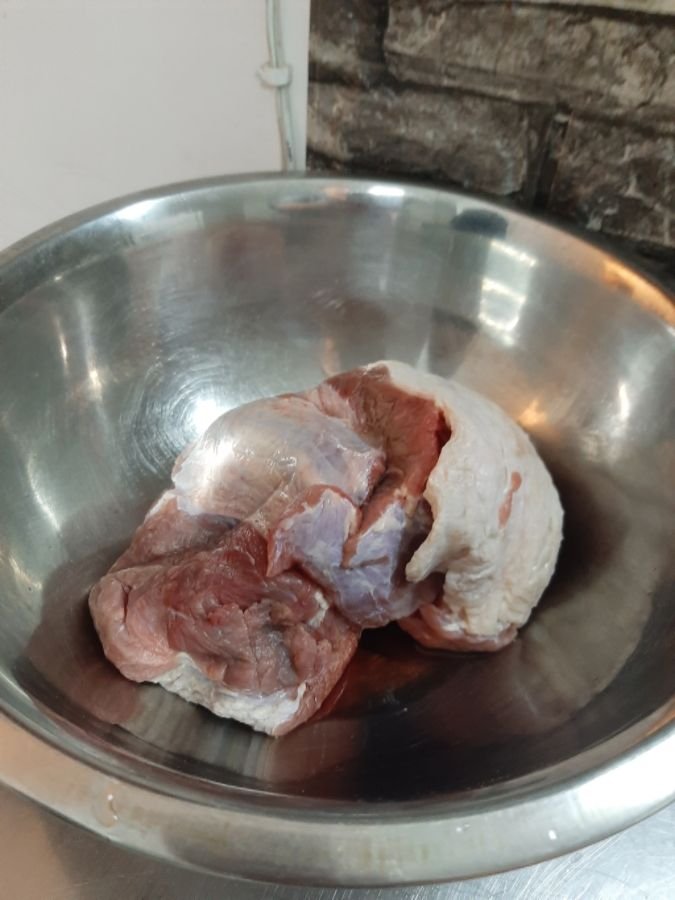 |
Paso a paso:
Elaboración de la masa y el pan:
En un bowl agregamos el azúcar, el agua tibia, no hirviendo, y la levadura.
Recuerda que la levadura está compuesta por organismos vivos que van a actuar para hacer crecer tu masa, y estos agentes leudantes no resisten altas temperaturas, es por este motivo que la sal la agregamos a la harina, para lograr un mejor leudado.
Estos microagentes leudantes son alimentados por los azúcares, por ello el agua se prepara con azúcar.
Dejamos reposar por unos 5 minutos y procedemos a agregar el aceite, luego la harina y hasta que no tengamos el primer paso adelantado del amasado, es decir que la harina esté integrada, pero que aún se pegue a las manos, agregaremos la sal.
Para pasar al mesón dónde vamos a proceder a dar un amasado hasta lograr una masa uniforme que se despegue de las manos.
Si es necesario, agregamos harina hasta llegar a este punto.
Una vez que la masa se despega de las manos y hemos logrado un lindo bollo de masa, dejamos reposar por al menos 30 minutos para permitir que las proteínas del gluten se relajen y nos permitan estirar la masa.
Luego dividimos en bolitas chicas y volvemos a dejar reposar al menos 10 minutos más.
Estiramos hasta lograr unos discos grandes de masa.
Llevamos al fuego en un budare o un sartén al revés, a fuego alto por unos 30 a 50 segundos por cada lado. No debe quedar tostado para que puedas darle la forma al shawarma.
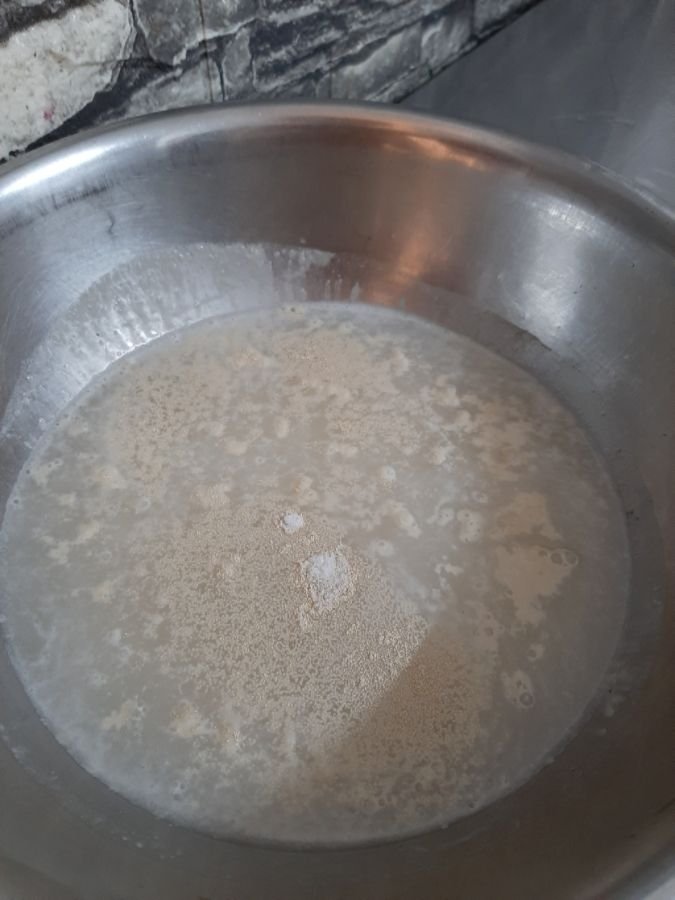 | 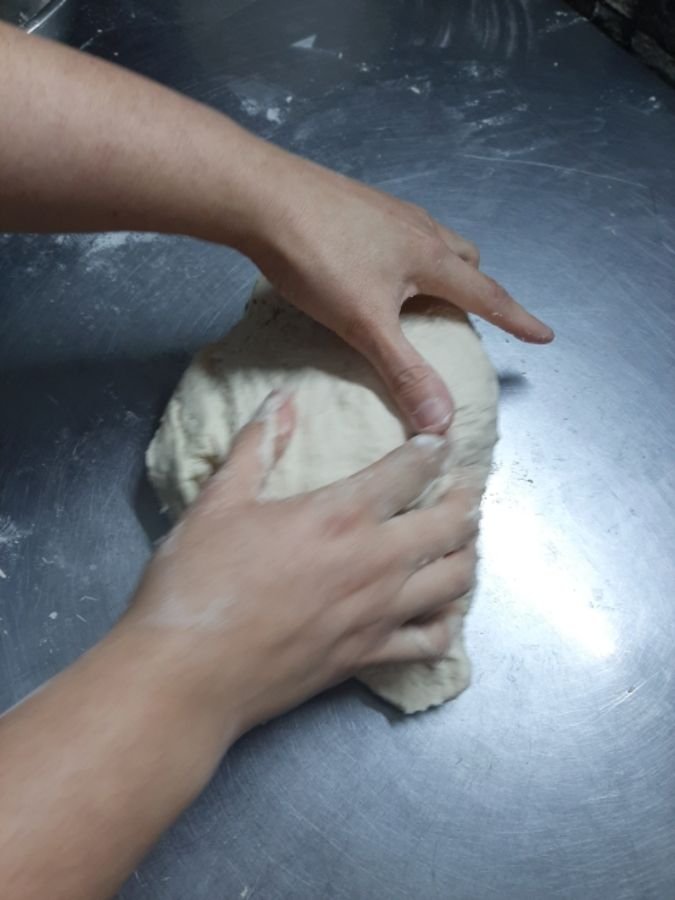 | 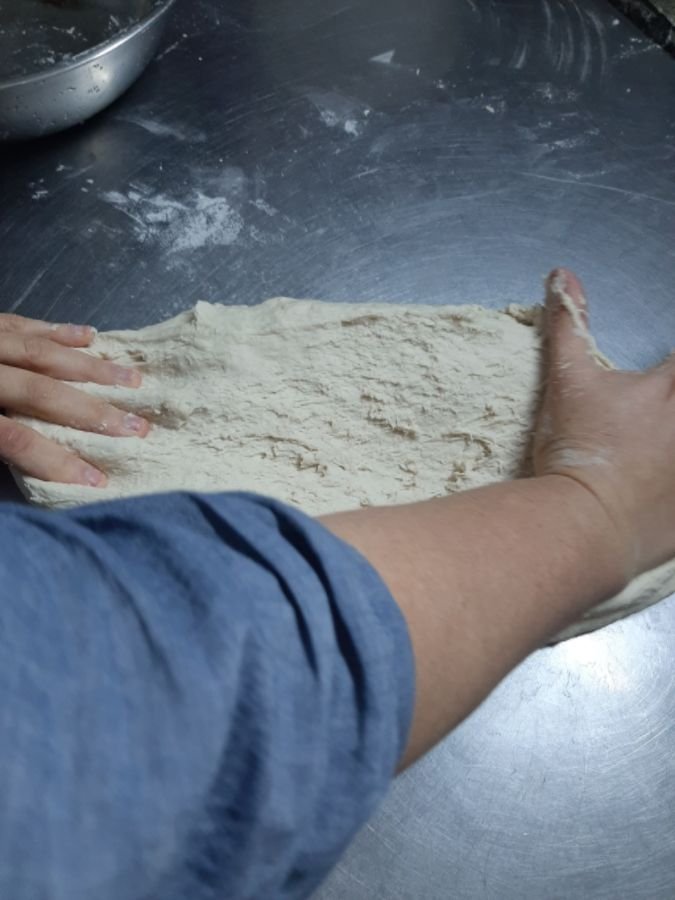 |
|---|---|---|
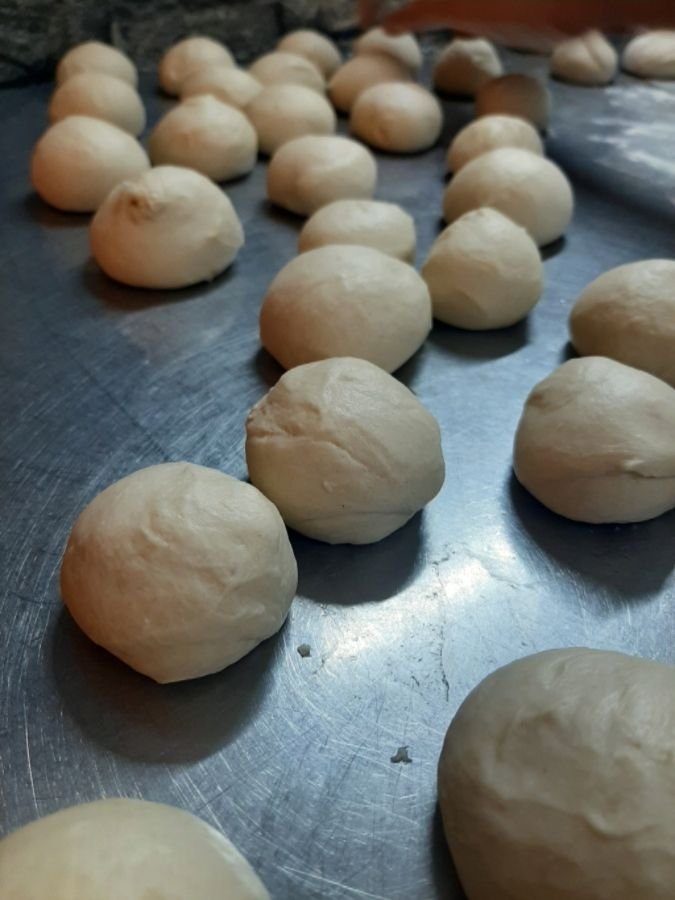 | 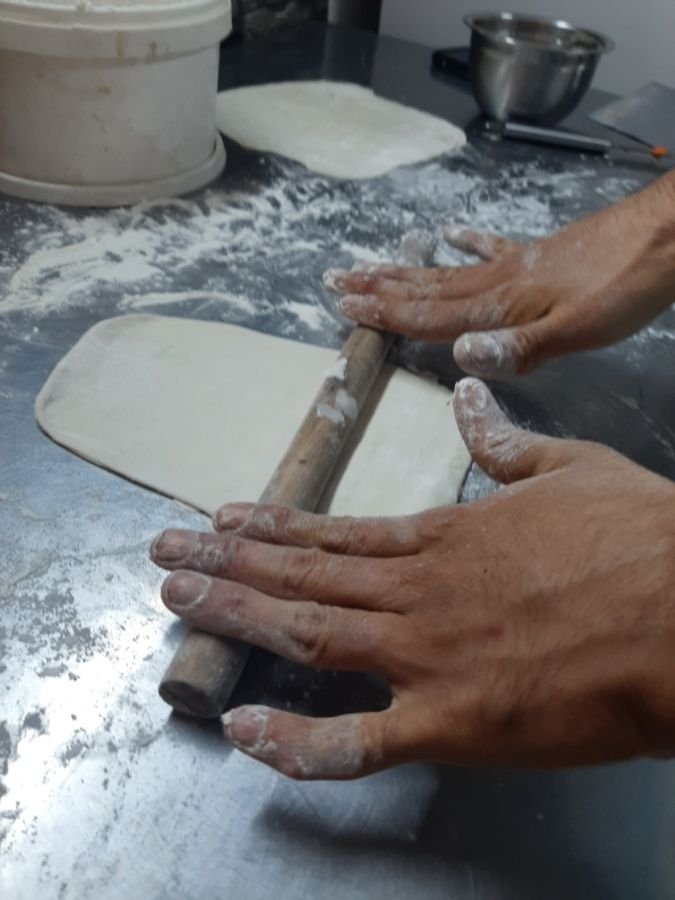 | 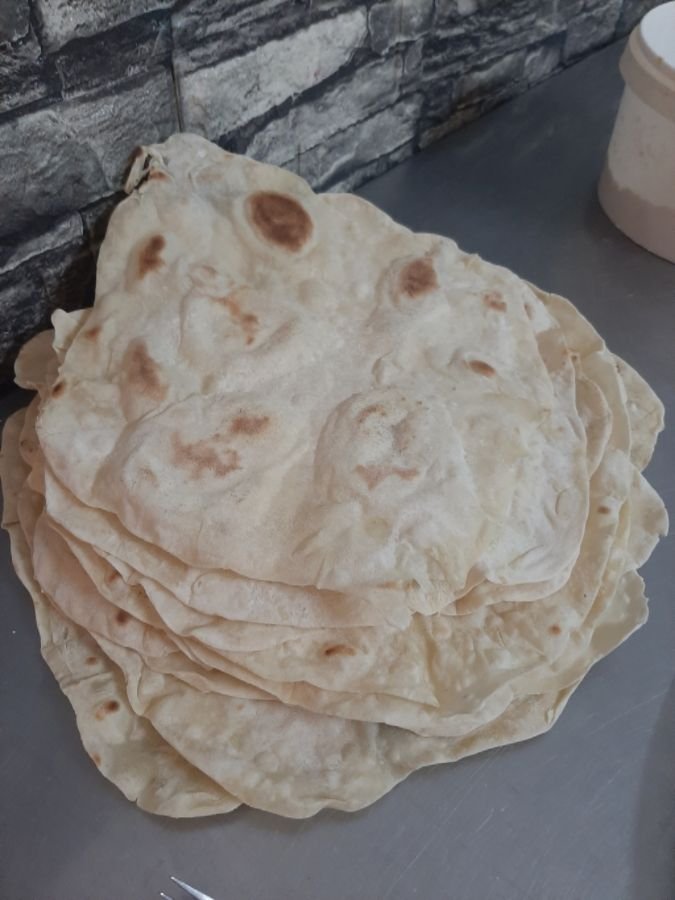 |
Nosotros hacemos un kilo de harina para que quede pan para el desayuno, amamos comerlo con queso crema, incluso hemos hecho pizza con este pan, solo agregando salsa de tomate, queso y jamón sobre los mismos antes de llevar al fuego en el budare. Cuántas cosas podría contarles sobre el uso que damos a estos panes, los amamos. Yo en lo personal amo dividirlos en dos capas y tostarlos mucho para que queden crocantes, los hago trocitos pequeños y los uso como crocante en ensaladas.
Para los vegetales:
Después de lavar, y cortar todo en juliana, vamos a poner una cacerola a calentar, cuando esté bien caliente agregamos aceite, y empezamos a sofreír la cebolla, cuando esté transparente agregamos el cebollino, el puerro y dejamos hasta que se pongan suaves, agregamos la zanahoria y removemos, luego agregamos ajo, y de último el vegetal con mayor cantidad de agua, en nuestro caso el zapallito.
Aquí haré una pausa para hablarles de este vegetal por el cual ya me han preguntado dos veces al privado.
El zapallito es un vegetal que parece una calabaza de cáscara suave y comestibles, es como el hijo de la calabaza, llamada auyama en Venezuela, y un calabacín o Zucchini. Es redondito y sabe superrico. Lo conocí en Uruguay, ame su sabor y la aportación de nutrientes a los alimentos, hasta ahora los he conseguido tanto en épocas de frío como en épocas de calor, por eso lo utilizo en casi todas mis preparaciones.
Volvamos al sofrito, dejamos cocinar todos los vegetales, no debes agregar agua, ellos con el calor y la pizca de sal van a soltar sus líquidos y estos ayudarán a qué se cocine todo. A mí, me gustan poco cocidos, que queden bien al dente, pero a mis hijos no, así que yo suelo separar los míos antes de que se pasen de cocción.
Una vez que estén en el punto deseado, dejamos reposar.
Para el humus:
Agregamos a la licuadora los garbanzos previamente cocidos, un poco del agua de la cocción, dos dientes de ajo, las especias, el jugo del limón, el aceite y el ajonjolí, todo va a procesarse hasta lograr una pasta exquisita.
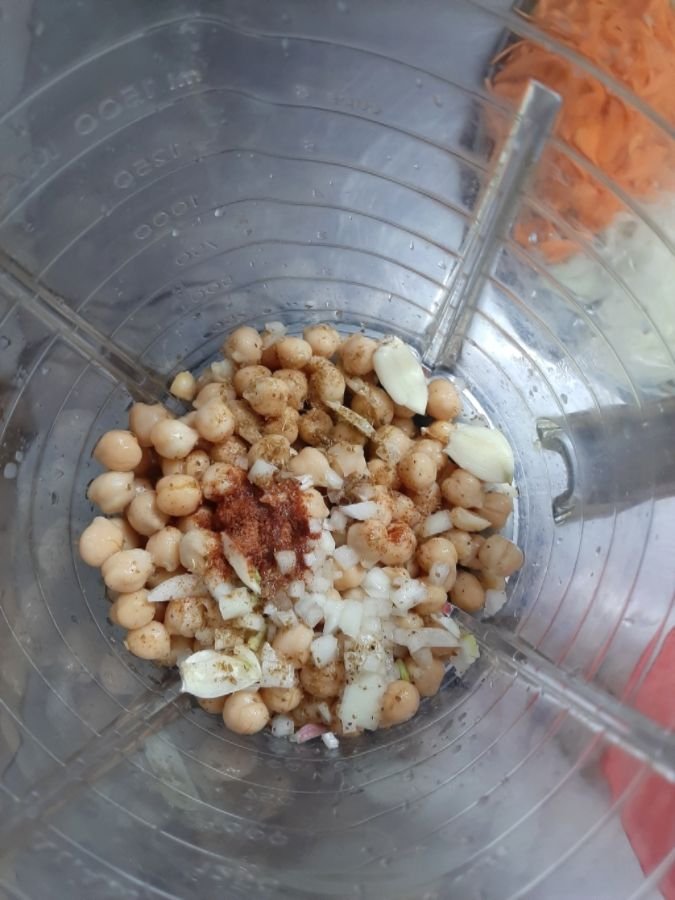 | 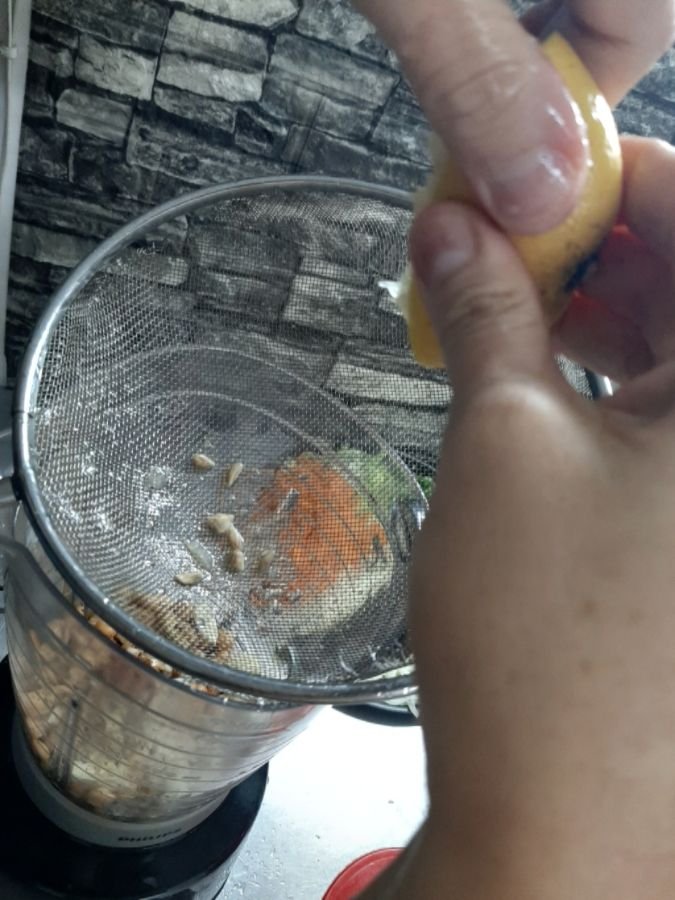 |
|---|---|
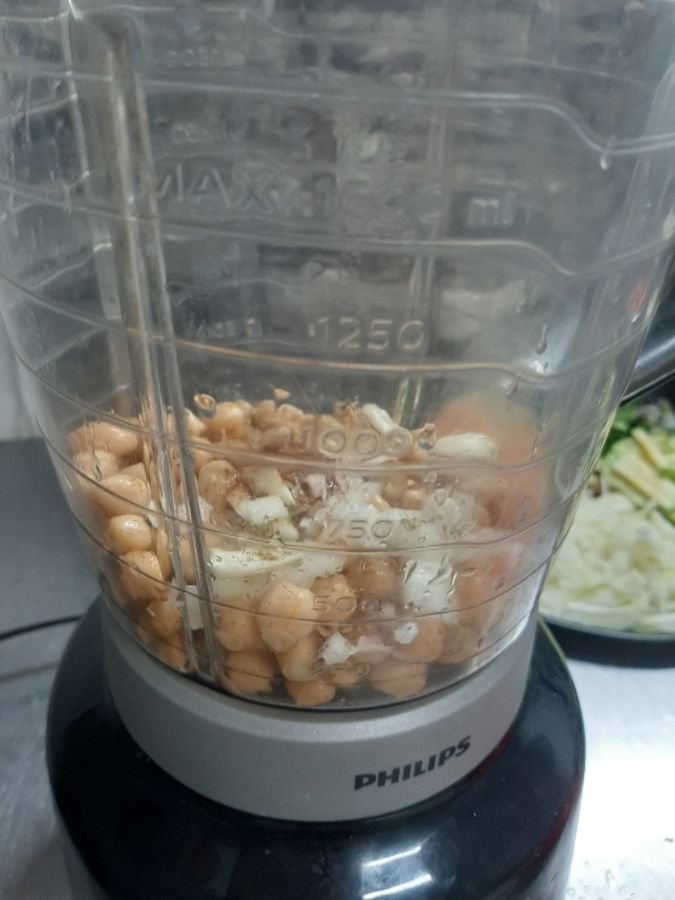 | 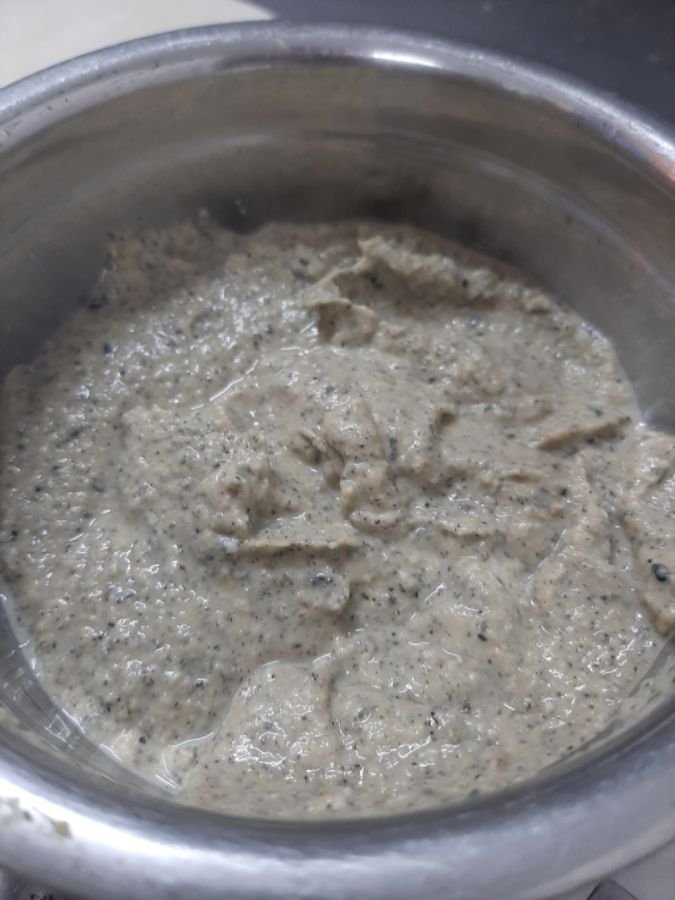 |
Las proteínas:
La bondiola la cocinamos entera, sellándola por fuera y procediendo a cortar en corte fajita, que es un corte en tiritas finas, las mismas las sofreímos hasta lograr el punto de cocción jugoso, pero a buen término que nos gusta.
La pechuga de pollo que me había sobrado de otra comida que había hecho, procedí a sofreírla con cebolla para que tomara sabor.
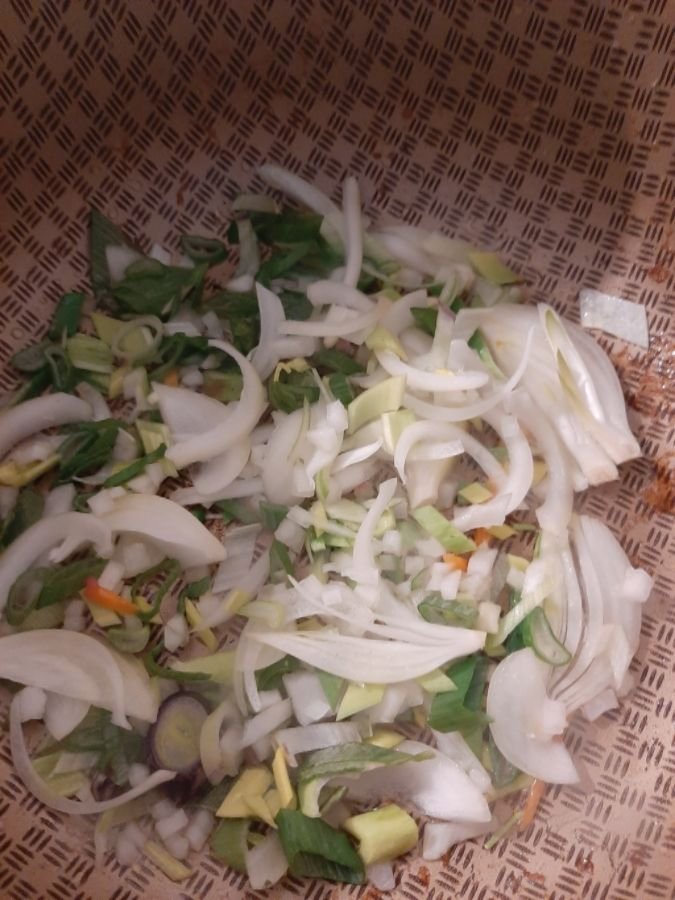 | 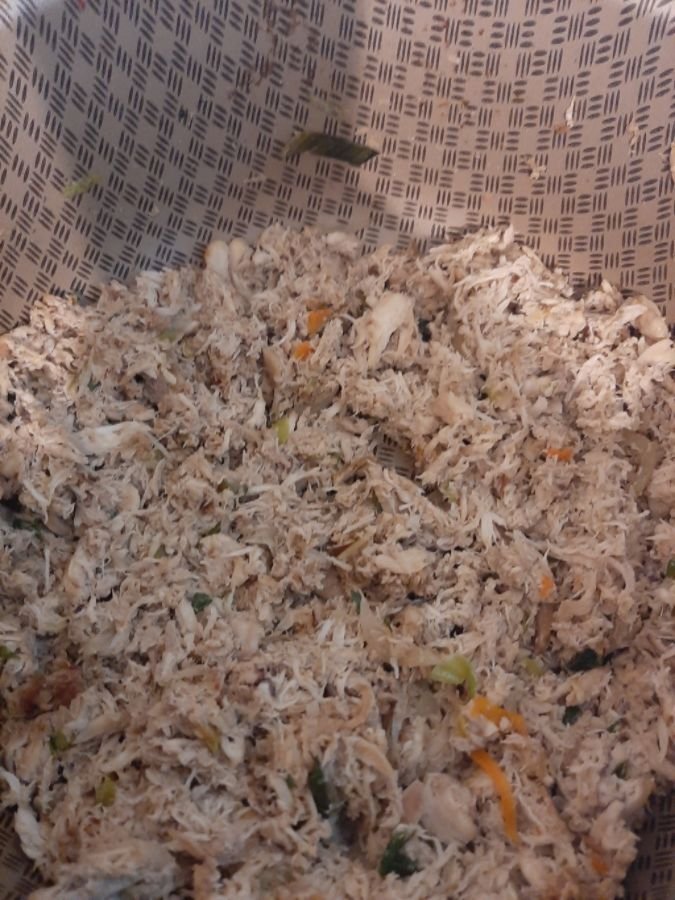 |
|---|---|
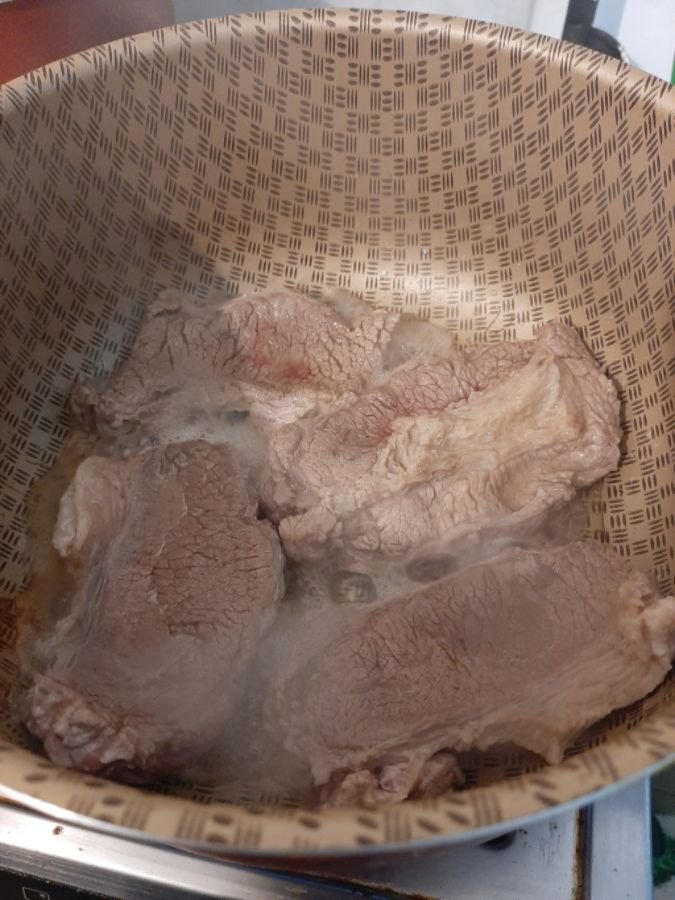 | 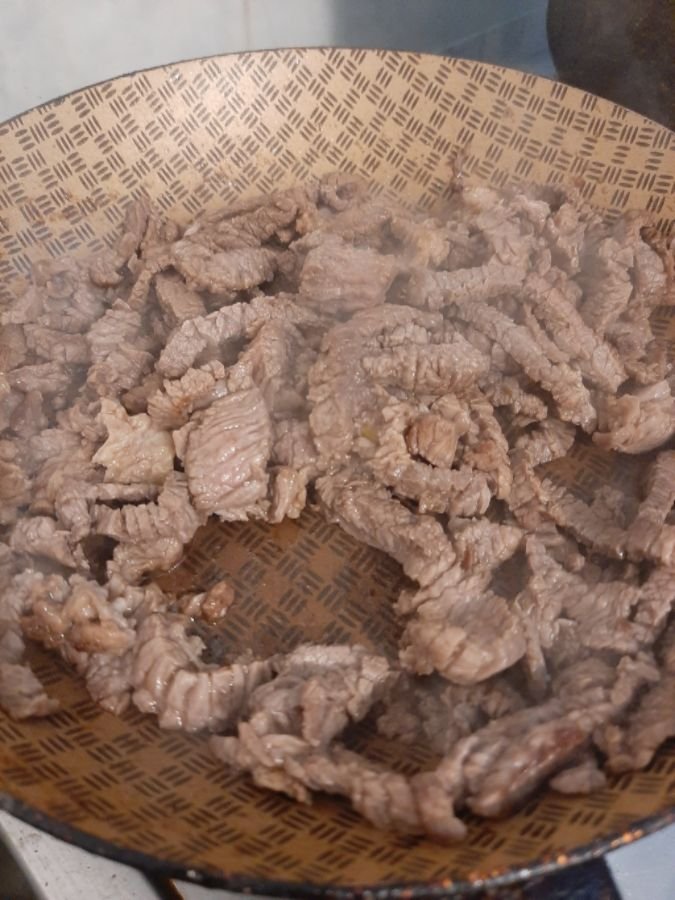 |
Con todos estos ingredientes listos pasamos al la mejor parte.
El armado y emplatado.
En lo personal hago una fila de panes, así hago todos los pasos una misma vez con todos y no me salto ninguno.
Agrego el humus, luego la proteína, luego los vegetales y de último la ensalada.
Procedo a doblar las puntas. Te explicaré como hacerlo para que queden cerradas y no se derramen los ingredientes.
Cuando todos los ingredientes estén dentro, haremos un doble como si de rollitos primavera se tratase (lumpias).
Lados opuestos del pan hacia dentro. Giramos el pan y procedemos a enrollar.
Es muy fácil.
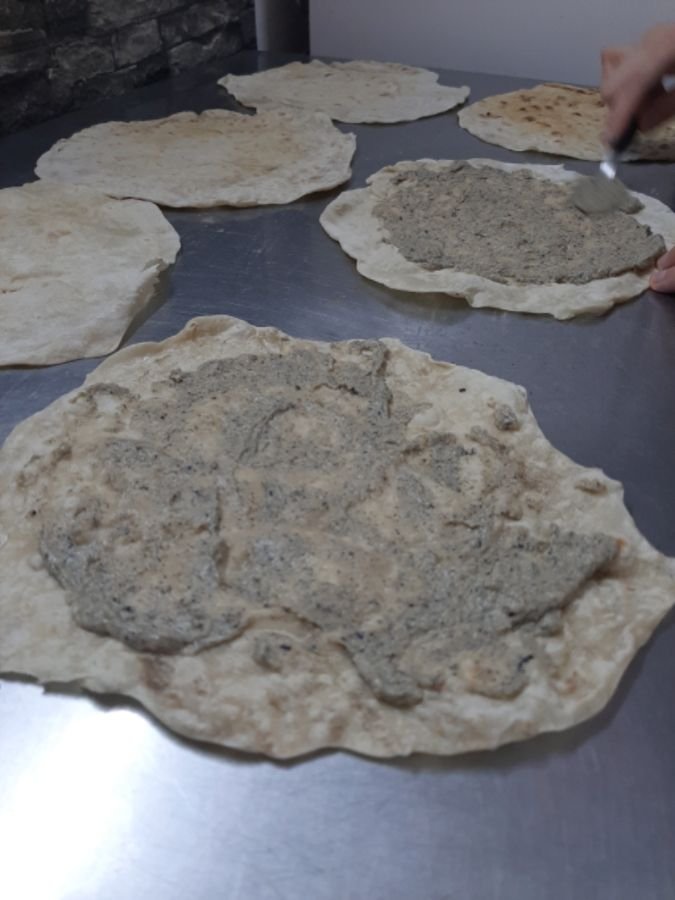 | 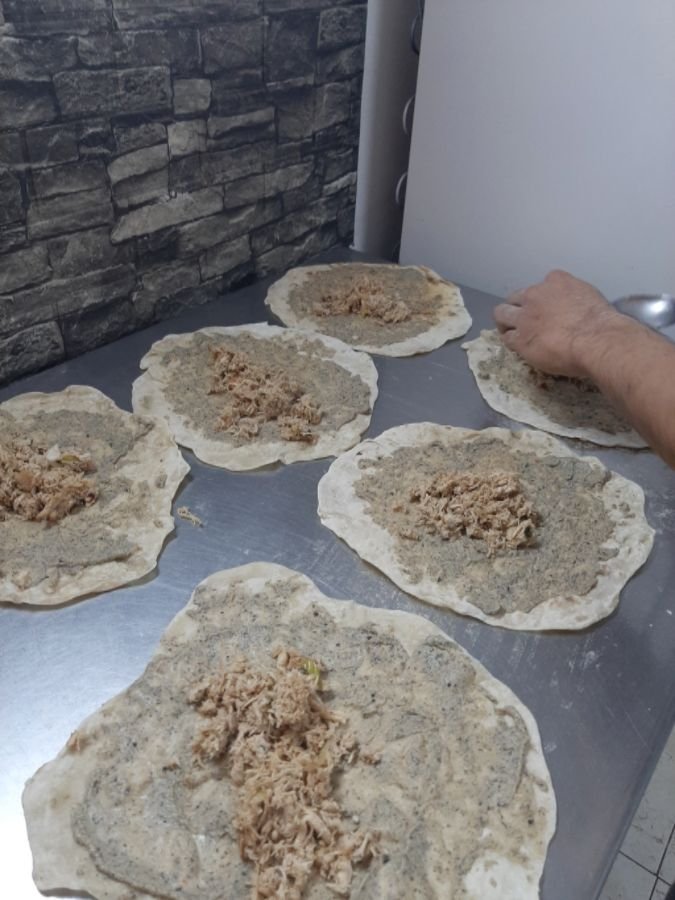 | 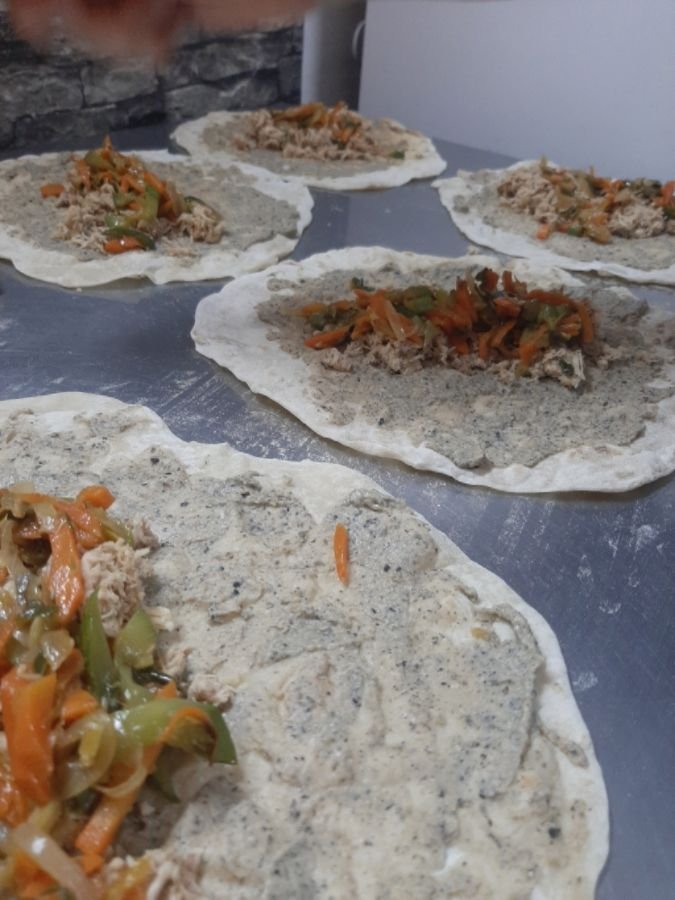 |
|---|---|---|
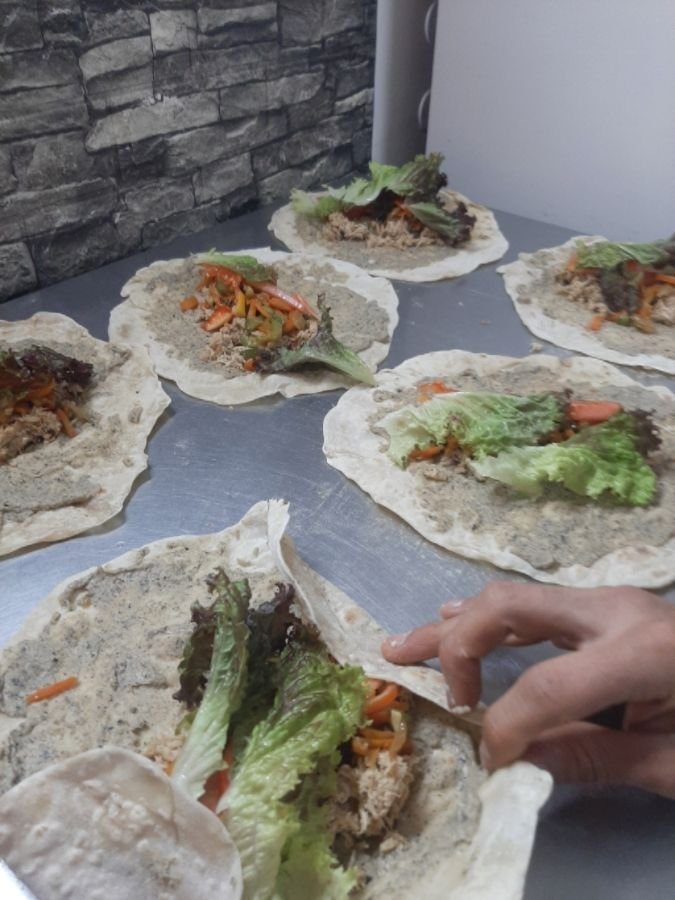 | 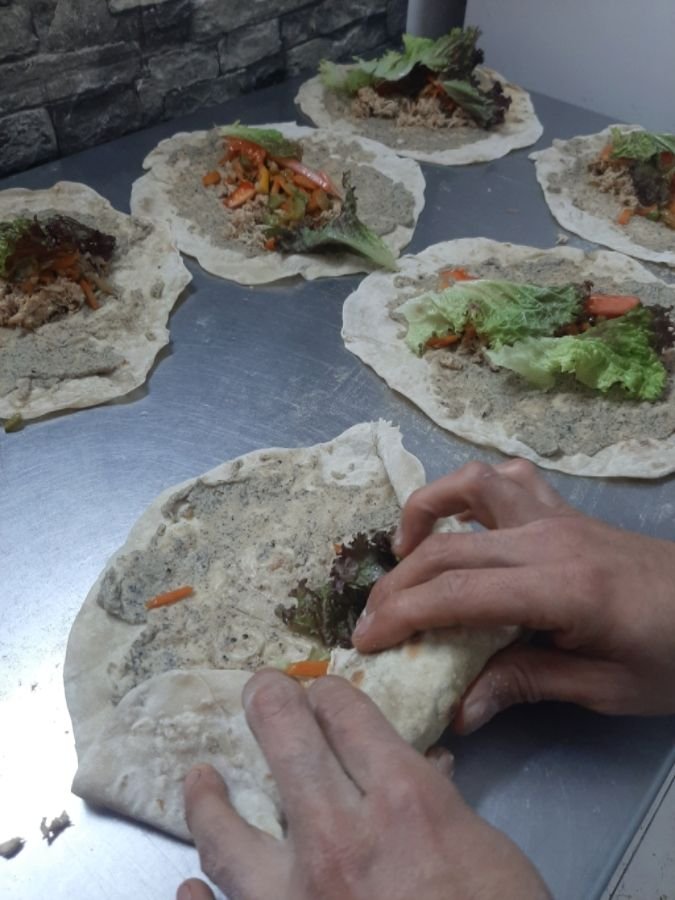 | 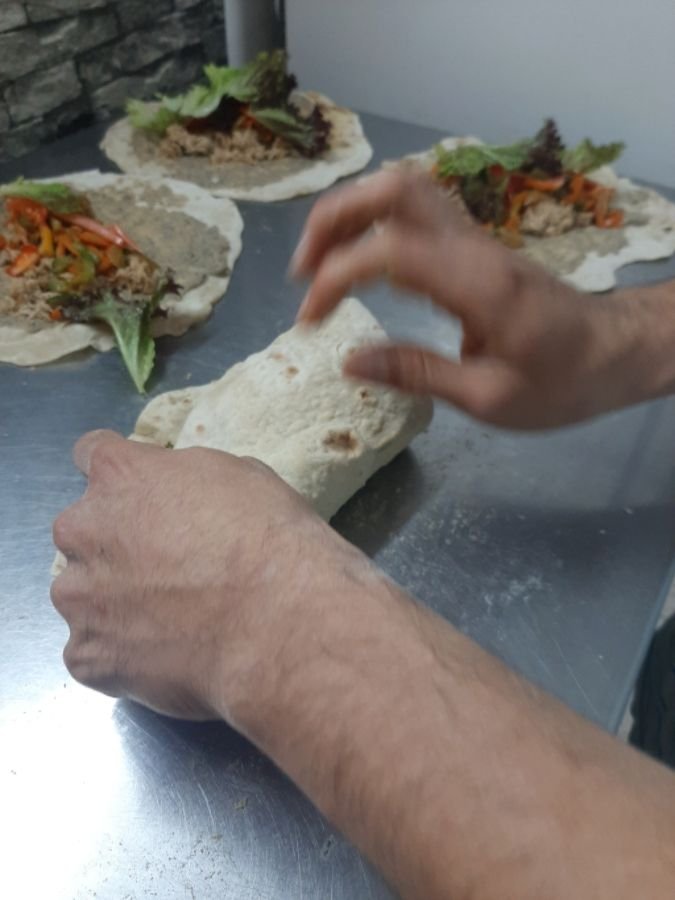 |
Servimos en el plato, cortamos a la mitad y listo. ¡Deliciosos shawarmas!

Espero que hayan disfrutado este paso a paso conmigo.
Nos vemos la próxima ocasión.

Todas las fotos usadas en este post fueron tomadas con mi Samsung galaxy A50
El banner fue realizado en Canva

My way of making Shawarmas
Hello dear community of @hivefood, today I bring you a post to lick your fingers (both because you fill them with food and for the deliciousness of it), join me today.
I have a serious problem with chickpeas, I love them!
So every time I cook chickpeas I make enough so I can make the thousand things I love to cook with them, from sopita, to salad and of course, hummus, what would my life be without hummus?
I could eat soda crackers, or water crackers as they call them in Uruguay, with hummus for breakfast every day, for me it is the glory, so after months without eating chickpeas, I bought a kilo of these, I prepared them alone with water until they were soft and then I divided them into portions, then I bring you a count of all the dishes I got from a kilo of chickpeas, but today I bring you some homemade shawarmas that for my children are the glory, and I, no way, I love them.
And how can I not love this recipe, if it has a good amount of vegetables, enough protein, and hummus!
Besides, my kids eat them without complaining, they don't complain about the vegetables, they don't complain about the salad we put on them, they don't complain about anything, they eat happily.
I know that this is not the traditional shawarma recipe, but this is our way of making them, very nutritious, at home, whenever we can hide the vegetables, we will do it, so it provides more nutrition and saves me the war of, mom I don't like this, I don't like that, mom take this out.
Besides, all the recipes we make are adaptations to the ingredients we have on hand, usually seasonal ingredients or those of the season we are in.
This is another of those laborious recipes, which takes us a long time to make, but for us it has a great value, both for the fact that we all work together as a family to make it, and for the fact that we enjoy the preparation of it very much.
By the way, I must mention that these shawarmas were very special, because the lettuce we used in them is totally organic, it came from our small garden, we harvested it exclusively for this recipe, which obviously had more sentimental value for us. They were planted from seed by my husband and we had been taking care of them for 74 days.
Join me in this step-by-step on how to make your own homemade shawarmas.
Ingredients:
For the dough:
500 ml of warm water
10 gr yeast
30 gr spoonful of sugar
1 kilo wheat flour
80 milliliters Oil
½ teaspoon of salt
For the vegetables:
2 zucchini
1 large carrot.
2 medium onions
1 chive
½ leek
2 cloves of garlic
Salad:
1 lettuce
2 tomatoes
Lemon to taste
Salt.
For the hummus:
250 grams of cooked chickpeas
50 ml of oil
2 cloves of garlic
Juice of one lemon
Sesame (which we used to replace the Tajin, as we ran out of it)
Proteins:
½ chicken breast cooked and larded (left over from another preparation)
1 kilo of pork bondiola.
 |  |  |
|---|---|---|
 |  |  |
Step by step:
Preparation of the dough and bread:
In a bowl add the sugar, the warm water, not boiling, and the yeast. Remember that yeast is composed of living organisms that will act to make your dough rise, and these leavening agents do not resist high temperatures, which is why salt is added to the flour, to achieve a better leavening.
These micro leavening agents are fed by the sugars, that is why the water is prepared with sugar.
We let it rest for about 5 minutes and proceed to add the oil, then the flour and until we do not have the first step ahead of the kneading, that is to say that the flour is integrated, but still sticks to the hands, we will add the salt.
To move to the counter where we are going to proceed to knead until we get a uniform dough that comes off the hands.
If necessary, we add flour until we reach this point.
Once the dough comes off the hands and we have achieved a nice dough ball, we let it rest for at least 30 minutes to allow the gluten proteins to relax and allow us to stretch the dough.
Then we divide it into small balls and let it rest for at least 10 minutes more.
Stretch the dough into large discs.
We take to the fire in a budare or a frying pan upside down, over high heat for about 30 to 50 seconds on each side. It should not be toasted so you can shape the shawarma.
 |  |  |
|---|---|---|
 |  |  |
We make a kilo of flour for breakfast bread, we love to eat it with cream cheese, we have even made pizza with this bread, just adding tomato sauce, cheese and ham on top of it before putting it on the fire in the budare. How many things I could tell you about the use we make of these breads, we love them. I personally love to split them in two layers and toast them a lot to make them crispy, I make them into small pieces and use them as a crunch in salads.
For the vegetables:
After washing and cutting everything into julienne strips, we will put a pan to heat, when it is very hot add oil, and start frying the onion, when it is transparent add the chives, leek and leave until soft, add the carrot and stir, then add garlic, and finally the vegetable with the most water, in our case the zucchini.
Here I will pause to tell you about this vegetable that I have already been asked about twice in private.
The zucchini is a vegetable that looks like a pumpkin with a soft and edible skin, it is like the son of the pumpkin, called auyama in Venezuela, and a zucchini or Zucchini. It is round and tastes superrico. I met it in Uruguay, I loved its flavor and the contribution of nutrients to food, so far I have gotten it both in cold and hot seasons, so I use it in almost all my preparations.
Let's go back to the stir-fry, let all the vegetables cook, you should not add water, with the heat and the pinch of salt they will release their liquids and these will help to cook everything. I like them slightly undercooked, al dente, but my children don't, so I usually separate mine before they overcook.
Once they are at the desired point, let them rest.
For the hummus:
We add to the blender the previously cooked chickpeas, a little of the cooking water, two cloves of garlic, the spices, the lemon juice, the oil and the sesame seeds, everything is going to be processed into an exquisite paste.
 |  |
|---|---|
 |  |
The proteins:
We cook the bondiola whole, sealing it on the outside and proceeding to cut it in fajita cut, which is a cut in thin strips, we fry them until we achieve the juicy cooking point, but in good term that we like.
The chicken breast that I had left over from another meal I had made, I proceeded to fry it with onion so that it would take flavor.
 |  |
|---|---|
 |  |
With all these ingredients ready we moved on to the best part.
The assembly and plating.
Personally I make a line of breads, so I do all the steps at the same time with all of them and I don't skip any of them.
I add the hummus, then the protein, then the vegetables and finally the salad.
I proceed to fold the ends. I'll explain how to do it so that they are closed and the ingredients don't spill out.
When all the ingredients are inside, we will make a double as if they were spring rolls (lumpias).
Opposite sides of the bread inwards. Turn the bread and proceed to roll up.
It is very easy.
 |  |  |
|---|---|---|
 |  |  |
Serve on the plate, cut in half and ready, delicious shawarmas!

I hope you enjoyed this step by step with me.
See you next time.

All photos used in this post were taken with my Samsung galaxy A50.
The banner was made in Canva




